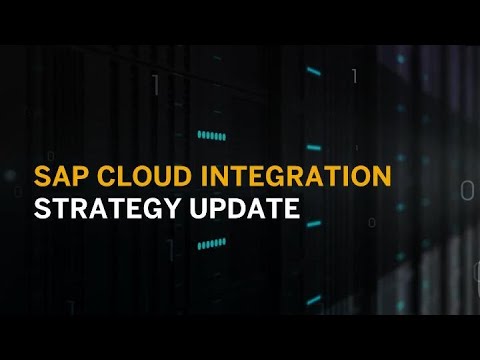Companies need to strive for business continuity and adapt quickly to new market conditions, in the current environment more than ever. To set themselves apart from their competition, they must continuously re–evaluate how their businesses run and execute fast and accurately – from incremental improvements to introducing completely new business models.
Customers often look to us for insights since we have been privileged to help run the world’s most critical business processes for almost 50 years – seamlessly and end-to-end. This is no different in today’s cloud world. To remain competitive, customers require access to live data to make informed decisions in real time. They benefit most when functions and processes are fully aligned.
According to a recent Oxford Economics study, 88% of integration leaders were able to increase transparency into their operations and 94% improved their profit margins.
Last year, we embarked on the mission to reimagine integrated end-to-end business processes and experiences along the entire value chain – including SAP, partner, and third-party solutions. We laid out our cloud integration strategy and road map with delivery timelines covering 2020 and 2021.

Integration – along with the value it brings for our customers – will continue to be one of our key priorities in 2021. In our updated integration paper, we share more details of the business benefits our scenarios will bring.
Integrated Business Processes, Unmatched Customer Value
In 2020, we made great strides in integrating our four core end-to-end processes that touch every business across all industries: Lead to Cash, Design to Operate, Source to Pay, and Recruit to Retire.
Customers like Orica have undergone a significant transformation over the past few years to redefine their business processes. With its 4S program, Orica consolidated its systems on SAP S/4HANA complemented by other SAP cloud solutions and extensions. A prerequisite when rethinking the company’s business processes was to avoid customization of the solutions. This way Orica could benefit from faster innovation delivery and a new level of transparency and efficiency across the enterprise.
In 2020, we delivered close to 350 integrations, representing more than 160% growth year-over-year. This year, we already have over 200 additional integrated business scenarios planned – and this number is growing as we speak.
But it’s not only about the number of integrations. We are particularly proud of the specific value these integrations deliver to our customers. Let’s look at some concrete examples of business outcomes. Already, customers today can:
- Handle multiple product types from physical products to services to subscription through the integration of SAP S/4HANA and SAP Commerce Cloud.
- Reduce time-to-hire by proactively collaborating on talent decisions thanks to the integration of SAP SuccessFactors, SAP S/4HANA Cloud, and SAP Fieldglass.
- Embed experience management at every step of the design phase to create products that customers love by integrating SAP Enterprise Product Development and Qualtrics.
- Conduct strategic sourcing by using contract management capabilities in SAP Ariba Contracts and centralized contracts in SAP S/4HANA to identify opportunities and improve the efficiency of negotiating their contracts.
We are also making great progress with delivering on the underlying suite qualities that serve as a strong foundation for all our integration efforts. They include elements such as:
- End-to-end process blueprints to reduce the planning effort for implementation projects and support architecture decisions
- Harmonization of domain models via SAP One Domain Model to simplify the exchange of business objects and improve data consistency across applications
- Embedded analytics with SAP Analytics Cloud, as well as customer-managed cross-product analytics using SAP Data Warehouse Cloud to make quick and confident decisions by relying on comprehensive analytical insights
With SAP Business Technology Platform (SAP BTP) as the foundation for our intelligent suite applications and industry cloud, SAP has the unique ability to integrate core processes end to end. At the same time, customers can choose the integration strategy that best fits their landscape, including cloud-to-cloud and hybrid integration options. The SAP Integration Suite offers more than 2,000 pre-packaged integration flows and over 160 open connectors to third-party cloud applications.
Intelligent Enterprise: It’s Integration and Innovation
We will continue our journey to seamlessly integrate all our solutions based on SAP BTP; to deliver on our promise of making the Intelligent Enterprise a reality. We want to meet our customers where they are. Our customers set the pace for their own transformation.
We have heard the requests for more hybrid scenarios from customers and user groups loud and clear. We will therefore extend our efforts to hybrid integration scenarios, including existing and new developments. Quite a big portion has been delivered already — for example in Source to Pay — and there is much more to come in 2021.
Not only do we focus on integration as such, but also on delivering highly integrated and innovative best-in-class cloud solutions to our customers. Based on the innovation delivered over the past years, we plan to even accelerate our innovation efforts in helping customers analyze and redesign business processes and make those more intelligent. This will include process innovations around artificial intelligence (AI) using machine learning and robotic process automation to improve data-to-value.
Customers no longer need to decide between integration and innovation. With SAP, it’s not one or the other. It’s both.
Juergen Mueller is chief technology officer and member of the Executive Board of SAP SE.
Thomas Saueressig is a member of the Executive Board of SAP SE, Product Engineering.



